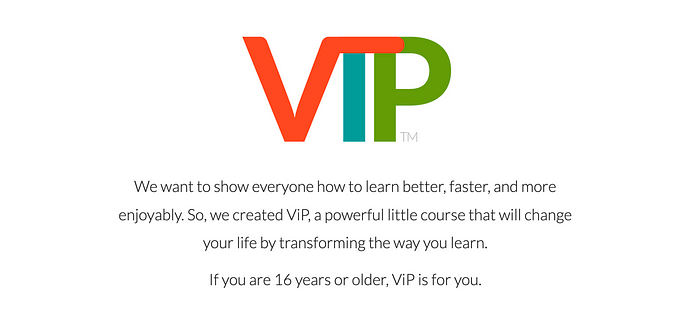
VUCA unpacked (2)—Collaborative capacity
In part two of this series about VUCA skills, the skill in focus is collaborative capacity. Collaborative capacity is one of four mega-skills that make up the meta-skill called “VUCA skills.” Collaborative capacity skills are the most foundational of all VUCA skills, in that they either support the development of other VUCA skills or are called upon when practicing other VUCA skills. Collaborative capacity skills include (1) self-regulation, (2) perspective-seeking, (3) perspective-taking, and (4) communication.
See VUCA unpacked (1)—Introduction, for general information about our approach to skills and skill-mapping.
What is collaborative capacity?
Collaborative capacity is the ability to work cooperatively with others in a variety of contexts, including collaborative learning, creative thinking, problem-solving, and decision-making.
Self-regulation is the ability to manage our own emotions and behavior. It is essential for healthy human interaction, which is a prerequisite for successful collaboration. Self-regulation skills include (1) cultivating open-mindedness, (2) self-awareness, and (3) humility, (4) regulating behavior and (5) emotion, and (6) combating biases that influence self-regulation.
Perspective-seeking is the act of seeking information or ideas from other individuals or sources with the goal of enhancing our own knowledge or perspective, building group knowledge, working or creating together, or making a collective decision. Actively seeking the perspectives of others is essential for individual development and all cooperative human activity. It also tends to increase our compassion and care for others, which can greatly enhance collaborative processes. Perspective-seeking skills include (1) clarifying understanding, (2) building trust and establishing rapport, and (3) cultivating other-awareness.
Perspective-taking is a mental process in which we attempt to see a situation or idea from another individual’s or group’s perspective. It is best done after we have developed a reasonable understanding of a perspective through perspective-seeking. Informed perspective-taking is essential when we are making quick decisions that affect others. Perspective-taking skills include (1) applying the golden rule (“Do unto others…”) and (2) combating biases that interfere with the accuracy of perspective-taking efforts.
High-quality communication increases collaborative capacity by contributing to mutual understanding. It also makes it possible for us to influence one another’s perspectives. Without communication skills, we would rarely be able to negotiate compromises or align around common goals. High-quality communication requires (1) clarity skills (which I discussed more fully in Clarity skills unpacked), (2) communicating ethically, and (3) employing induction.

Collaborative capacity and VCoL+7
Many collaborative capacity skills are also required for optimal learning. In the VCoL+7 model, collaborative capacity skills relate most closely to self & other awareness, overcoming biases, seeking & evaluating information, and seeking & working with feedback.
These skills are at the core of learning throughout our lives because they are the mechanisms through which we take in and process information. With VCoL, we can develop increasing virtuosity in these skills throughout our lives.
The same skills that develop collaborative capacity are required for optimal learning throughout the life-span.
Collaborative capacity skill-map
As explained in the introductory article, skill-mapping involves breaking down large, complex skills (meta-skills) into smaller and smaller sub-skills until we arrive at micro-skills—skills that can be practiced in context, in realtime.

The purpose of skill-mapping is to identify micro-skills that can be practiced in micro-VCoLs—in-the-moment learning cycles of goal-setting, information-gathering, application, & reflection.
Check out the article on micro-VCoLs and micro-VCoLing to learn more about micro-skills and how we use them to support optimal development.
Collaborative capacity skills
Spend a few minutes studying the skill map below. Begin by examining the skill hierarchy. Notice how the larger skills relate to smaller skills. For example, you may notice that the perspective-seeking skill is broken down into three smaller skills—increasing other awareness, building-trust & establishing rapport, and clarifying understanding. If you follow the clarifying understanding skill, you will see that it is further broken down into test understanding and address gaps in understanding. Finally, consider how ask clarifying questions and ask probing questions—the two skills that branch from address gaps in understanding—differ from their parent skill. Repeat this process with another skill strand to see if your observations about ask clarifying questions and ask probing questions hold true for skills at the ends of other strands.

If you have checked out a few of the strands in the map, it’s likely you’ve noticed that many (or most) of the skills at the ends of skill strands would be difficult to break down further. You may also have noticed that they could be practiced in real-world contexts, in realtime. Skills with those characteristics are always micro-skills.
Micro-skills (1) can be practiced in real-world contexts, in realtime, and (2) are often difficult to break down into smaller skills.
In the map below, I’ve labeled examples of mega, macro, mini, and micro-skills so you can more easily visualize how these categories relate to one another in our skill maps.

The untidiness of skill maps
Because skill-mapping is an attempt to bring order to an untidy reality, there are a number of issues it’s useful to be aware of:
- All micro-skills are not equal. Smaller and more precisely defined micro-skills are the easiest to practice—especially if you are new to micro-VCoLing.
- The ability to distinguish between mini and micro-skills can depend on how well we understand the skill in question. For example, in the top left-hand corner of the map below, “cultivate compassion” is highlighted as an ambiguous skill. Is it a mini-skill that can be broken down further? What exactly is involved in cultivating compassion?
- Sometimes, a micro-skill follows a mini-skill. Other times there is an extra layer between a mini-skill and a micro-skill. There are several examples in the map below.
- It’s sometimes difficult to figure out where a skill belongs. I’m still wondering if the induction strand belongs in this map or would work better in the decision-making map. In the end, this issue has little bearing on the usefulness of the collaborative capacity map. The most important thing in skill-mapping is identifying micro-skills. Organizing skills is useful for building magnificent learning tools 😊, but it’s not the point here. (BTW. We’ve updated the main map—the first collaborative capacity map in this article—several times since this article was first posted. Induction was moved to our conflict resolution map.)
- A skill can be micro enough in one context and not in another. If there is a way that a skill can be practiced in context and in realtime, it is a micro-skill with respect to that practice. For example, it would be possible to design a micro-VCoL practice around recognizing emotion in general (upper right on the map below), but it would also be possible to design several micro-VCoLs focused on recognizing emotions.
- Micro-VCoLing usually involves practicing more than one micro-skill at a time. Some micro-skills are so fundamental that they show up in almost every micro-VCoL. For example, all micro-VCoLs require an active observer (self-regulation —> cultivate self-awareness —> cultivate a healthy active observer), which means that all micro-VCoLs are opportunities to build active observer skills.
- Some skills, such as perspective-seeking, are ubiquitous. They show up repeatedly in maps focused on a variety of meta and mega-skills. We consider these skills to be more general and fundamental than other skills. They are often skills we can benefit from practicing continuously throughout our lives, and many of them are +7 skills.
- Learn more about skill mapping by reading VCoL in action: Skill mapping.
Skill-maps are never really finished. Want to see if you can improve this one? Just download the Simple Mind file and have a go.

Up next
VUCA unpacked (3)—Perspective coordination
Citation for this article
Dawson, T. L. (2020). VUCA unpacked (2) — Collaborative capacity.

